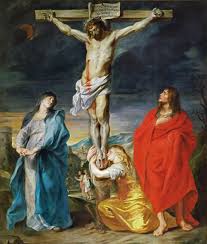It what is becoming a recurring theme. Fr. Arturo Sosa, SJ, the Superior General of the Jesuit Order recently told an Italian magazine that the “devil exists as a symbolic reality, not as a personal reality…The devil exists as the personification of evil in different structures, but not in persons, because [he] is not a person, [but] is a way of acting evil. He is not a person like a human person. It is a way of evil to be present in human life.” This statement comes on the heels of a similar statement two years ago in which told another magazine that “we have formed symbolic figures such as the Devil to express evil.” This, of course, contradicts the unbroken Tradition of the Church, rooted in Sacred Scripture, that the devil is in fact a person and with his minions in tow, he actively works to destroy humanity out of envy. Fr. Sosa is not alone in his belief however and therefore his position merits a thorough examination.
One might be tempted initially to dismiss the whole discussion. The reality of evil in the world, it seems, is a human problem and therefore the nature of its source is not really important. If you want to believe in an actual devil or a symbol, then what difference does it make? As we shall see, and without danger of hyperbole, it makes all the difference in the world.

Let us first call to mind what we mean when we speak of the devil as a person. At root, a person is a being that has intelligence and the capacity to choose. Lucifer along with the rest of the fallen angels were endowed with these inherent capabilities by God at their creation. Rebelling against God, their intelligence and perverse will remain fixed on the destruction of His human creatures. Endowed with a power over nature, the demons work with extreme intelligence to set in motions plans for this destruction. These diabolical plans are carried out both directly and through human cooperation. Any notion that evil does not have a personal power behind it then would not fit with the reality of what the Church knows to be true. Fr. Sosa, on the other hand, would have us believe that the devil “exists as the personification of evil in different structures” (emphasis added). Removing the personal element, we now find evil as presented to us in “different structures”.
Why the Difference Matters
The difference is no mere subtlety but amounts to a vastly different Christianity. If evil exists and is aided and abetted by the devil, then the battle is primarily a spiritual battle. Knowing who our true enemy is, we engage in the appropriate battle. The devil who is pure spirit is only susceptible to spiritual combat. Aided by grace and the Communion of Saints, we engage first and foremost on a spiritual front—“For our struggle is not against flesh and blood, but against the rulers, against the authorities, against the powers of this dark world and against the spiritual forces of evil in the heavenly realms” (Eph 6:12). Using an image from St. Thomas Aquinas, men are like horses and the demons are like riders. When we dislodge the riders, the horses run free. Souls are saved in the midst of this combat.
Compare this to evil in “different structures”. If there is no person behind the evil then the battle is no longer spiritual but political. This sounds very similar to the ideas of Rousseau, Marx, Nietzche, Stalin, and Mao. They all sought to create political solutions to remove the structures of evil, even at the edge of a sword. They became demons themselves. But even if they were to find some utopic solution, it would still mean demonizing any men and women that opposed them. In short, if you deny the existence of demons, then you will most certainly create them. And because the proper home of demons is hell, souls will most certainly be lost.
The Devil as the Un-Person
The substitution of the political for the spiritual solution is precisely why Fr. Sosa’s ideas are not just stupid, but dangerous. They open up a Pandora’s Box of sorts that ultimately tears at the roots of true Christianity. His very ideas are diabolical because it creates “structures” that are turned away from God and de-personalize man. When then Cardinal Ratzinger was asked the question in 1973 about whether there was a personal devil he said, “If one asks whether the devil is a person, then one must in an altogether correct answer that he is an Un-Person, the disintegration and corruption of what it means to be a person” (Ratzinger Reader, p.44).”
What the future Pope was saying is that the diabolical disorientation that Fr. Sosa is proposing ultimately leads to more “Un-Persons” and not some cute theological trick. It is clear based on past evidence that he truly believes this to be true and thus should be corrected as the International Association of Exorcists did last week. For our part, we too need to realize that there is a powerful person who hates each one of us more than we can possibly imagine and our only refuge is in the Blood of Christ, the only Person Who can save us.

















